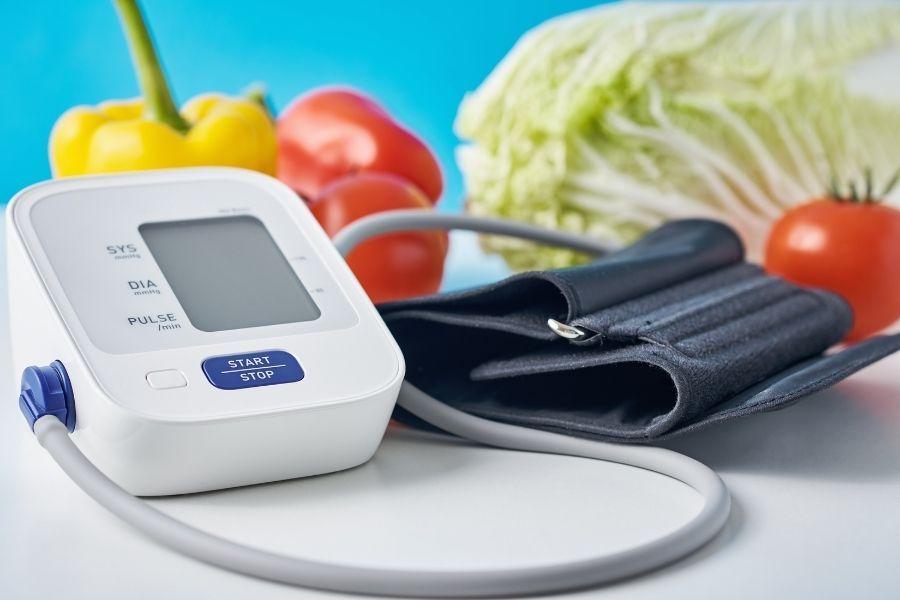
Why should I have one?
Having a blood pressure meter at home allows you to check your blood pressure (BP) conveniently.
This can help you take better care of your blood pressure.
What should I look out for when choosing a meter?
- Easy to use
- Convenient to carry around
- Fast and accurate
- Reliable results
What should I take note of?
- Take note of the date and time of the day you measure your BP. Take your BP at about the same time each day as there are differences in BP measured throughout the day.
- Your BP reading may be affected by certain conditions such as blood vessel diseases and irregular heart rate
- BP is usually measured in the non-dominant arm. For example, if you are right-handed, this will be your left arm. Measure the same arm each time. Do note that there are slight differences in BP measured between different arms.
- Do not wear tight fitting clothes.
- Do not smoke, drink caffeinated drinks (e.g. tea or coffee) or exercise 30 minutes before measuring your blood pressure
- Do not move around or talk when taking BP. Do not cross your legs while taking your BP.
- Do not stop or change your medicine dose based on your home BP results. If your BP reading is very high or very low, you should talk to your doctor.
- Do not drop the device
- Keep the meter away from moisture, dirt, wide temperature differences and direct sunlight
- Do not be overly worried with a one-off high reading. Take a break before measuring again. However, if the reading remains high all the time, see a doctor.
Why Should I Record My Blood Pressure Readings?
- Keep a record of your blood pressure readings and bring it along when you visit your doctor.
- This will be helpful in checking how well your blood pressure is controlled and the activities that may cause your blood pressure to change.
- Write down the date and time when you are measuring your blood pressure. You should also record any related events that could have caused a change in your BP e.g. "Argued with spouse". "Just mopped floor" or "Having headache".
How do I use the BP Meter correctly?
There are 2 types of BP monitoring devices available in the market:
- Upper arm type
- Wrist type
View our full range of Blood Pressure Monitors here.
Correct use of the upper arm type
- Sit quietly for five minutes, with your feet on the floor and back well supported. Your arm should be resting on a flat surface, with the upper arm at heart level.
- Unroll the arm cuff
- Place cuff 1 - 2 cm above elbow (roughly 1 middle finger + index finger)
- Turn the palm of your left hand upward.
- Pull to wrap the arm cuff
- Cuff should not be too tight - the index and middle finger should fit under the cuff with little difficulty
- Lightly open the palm facing upwards and place your elbow on the table so that the center of the arm cuff is at the heart level (nipple level)
 | When measuring blood pressure, lightly bend your elbow without raising it above the table. |
 | Adjust the edge of the arm cuff 1-2cm above the left elbow, with the marker in the center, pointing towards the middle finger. Be careful not to cover the elbow with the arm cuff. |
 | Lightly open the palm facing upwards and place your elbow on the table so that the center of the arm cuff is at the heart level (nipple level). |
Correct use of the wrist type
- Wrap the pressure cuff comfortably around the wrist with the thumb facing upward
- The display screen should be placed on the palm side of the wrist
- Make sure that the wrist cuff does not cover your palm
- Bring the meter to your heart level and relax
- Do not talk or move during the measurement
- Press the start button and wait until the measurement is completed
 | Wrist blood pressure monitor |
 | Sit comfortably, hold your arm to your chest and relax |
 | Hold your arm across your chest so that your fingers are touching the opposite shoulder. Keep the monitor at heart height until the measurement is completed |
What do the numbers mean?
Blood pressure is described by 2 numbers. The unit for BP measurement is mmHg, which stands for millimeter mercury. This is because the traditional BP machine uses a mercury column to measure BP readings.
"Systolic" refers to BP when the heart contracts while pumping blood. "Diastolic" refers to BP when the heart relaxes or is at rest between beats. For example, if your BP is 120/80, the systolic BP is 120mmHg and the diastolic BP is 80mmHg.
| Blood Pressure Level (mmHg) | |
BP Category | Systolic (mmHg) | Diastolic (mmHg) |
Normal BP | Less than 130 | Less than 85 |
High-Normal BP | 130 – 139 | 85 – 89 |
High BP (Grade 1) | 140 – 159 | 90 – 99 |
High BP (Grade 2) | 160 – 179 | 100 – 109 |
Hypertensive Crisis (See your doctor immediately) | Higher than 180 | Higher than 110 |
Source: MOH Clinical Practice Guideline1/ 2017 Hypertension
.png)



















































